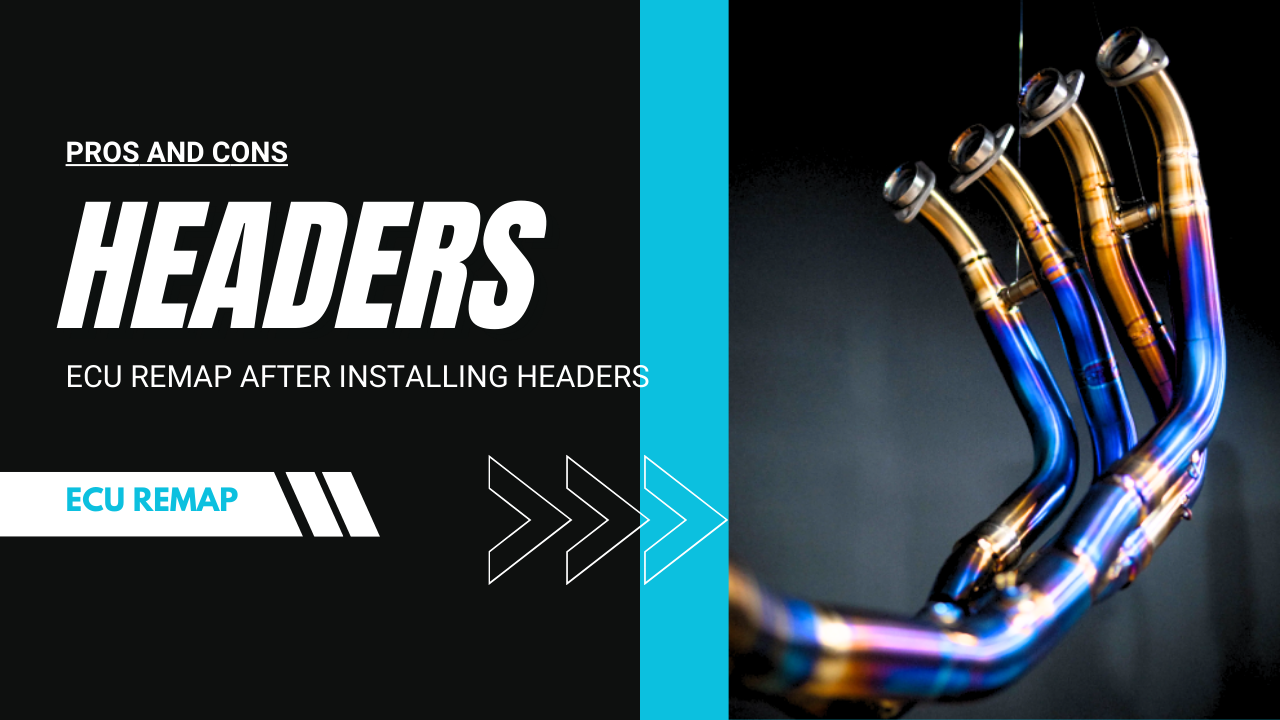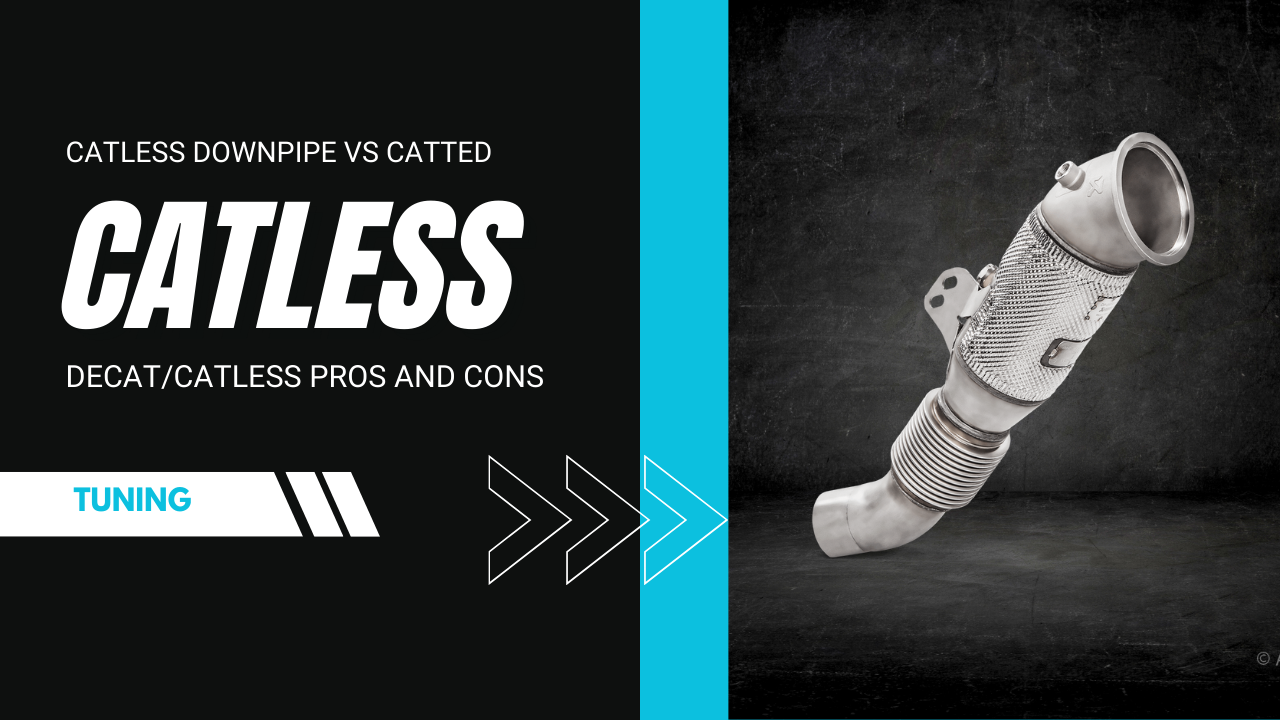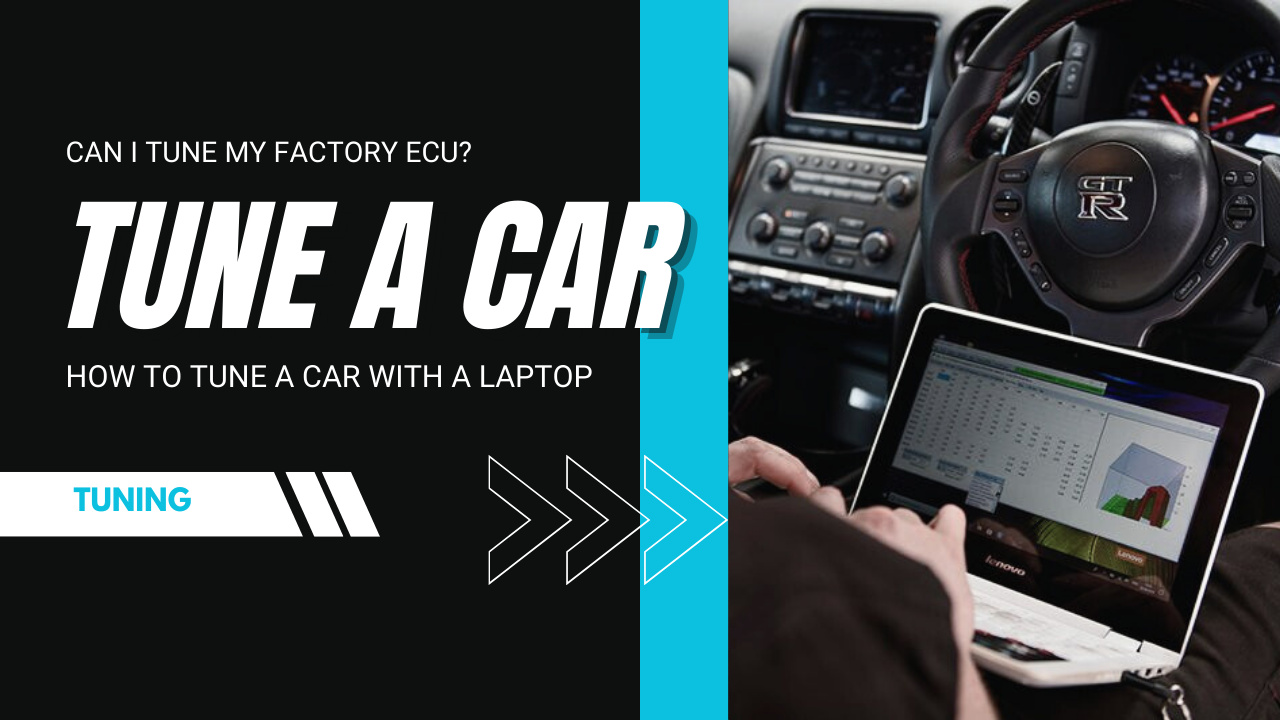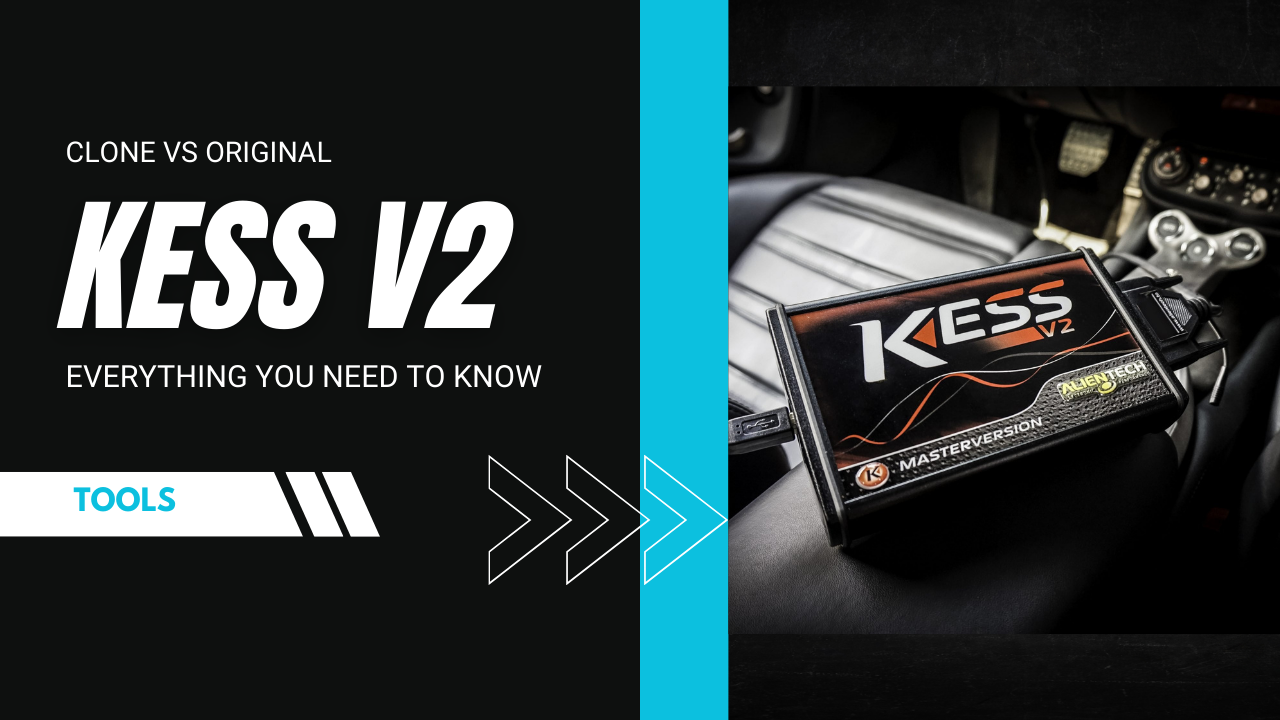
Headers vs Manifold pros and cons / ECU Remap After Installing Headers
What Are Headers?
Headers are actually the primary part of the exhaust system. Headers are essentially a modified exhaust manifold that is designed based on the principles of fluid mechanics engineering and CFD. It replaces the primary part of the exhaust (exhaust manifold and catalyst). In fact, the manufacturing process of factory exhaust manifolds in cars is usually based on the casting method, but headers are made by bending and cutting alloy or steel metal tubes and are not capable of cheap mass production. This is why most mass-produced and factory cars don’t have headers. This part is usually installed in tuned, limited-production and racing cars.
What Are the Differences of Headers vs Downpipe vs Manifold?
These following components play essential roles in an engine's exhaust system, influencing performance, sound, and efficiency. Here’s how they differ:
Headers:
Performance-focused, improve exhaust flow by merging pipes from each cylinder, reducing backpressure, and boosting horsepower, torque, and efficiency. Common materials include stainless and ceramic-coated steel for durability and heat resistance.
Downpipes:
Turbo-specific, reduce restriction post-turbo, improving spool time and power output. Available as catted (with a catalytic converter) or catless (without).
For a better understanding of downpipe and decat, you can read the comprehensive article written on this topic.
Manifolds:
Factory-installed, durable, and designed for stock engines. They collect exhaust gases and direct them to the exhaust system. Made of cast iron with short runners, they prioritize cost efficiency and heat resistance but are more restrictive than headers and unsuitable for performance upgrades.
Each component serves a unique function, and upgrading them can significantly enhance engine performance, especially when paired with proper ECU tuning.
Types of headers for cars:
There are several types of headers for 4-cylinder cars, each designed to optimize exhaust flow and performance. The 4-2-1 header design merges four exhaust pipes into two, then into one, offering improved mid-range power and torque, while the 4-1 design merges all four pipes directly into one, maximizing high-end power for performance-focused engines. Headers can also vary in length, with long-tube headers offering more exhaust flow and better high-end performance, while shorty headers are more compact, easier to install, and typically enhance low-end power. Additionally, headers come in equal-length and unequal-length configurations. Equal-length headers ensure that each exhaust pipe is the same length for uniform flow, promoting balanced power, while unequal-length headers prioritize a more aggressive exhaust sound and often improve mid-range performance at the cost of some power consistency.
Headers Pros & Cons
Benefits of headers on a car:
- Improved Performance: Headers optimize exhaust flow, reducing backpressure and increasing horsepower and torque, especially at higher RPMs.
- Better Engine Efficiency: The individual pipes in headers enhance exhaust scavenging, improving overall engine efficiency and performance.
- Customization: Headers are available in various designs (long-tube, shorty, equal-length, etc.) to suit different performance goals.
- Material Options: Headers are often made of durable materials like stainless steel and ceramic-coated steel for heat resistance and longevity.
Disadvantages of headers for cars:
- Risk of Failing Emission Tests: Removing the catalytic converter or modifying the exhaust system with headers can lead to higher emissions, potentially causing the vehicle to fail mandatory emission tests in certain regions.
- Increased Engine Noise: While headers may enhance engine sound for performance enthusiasts, they can increase exhaust noise, which may be disruptive to neighbors or passersby.
- Need for Fuel and Air Adjustments: Without proper ECU remapping, installing headers may lead to incorrect fuel and air mixture, potentially resulting in higher fuel consumption or suboptimal performance, making the car feel no different than before.
- Potential Exhaust Leaks: Improper installation of headers, particularly by inexperienced technicians, can lead to exhaust leaks, reducing overall system efficiency and potentially damaging engine components.
Are exhaust headers illegal?
Exhaust headers themselves are not illegal, but their legality depends on local emissions regulations. Headers that bypass catalytic converters or other emissions control systems can violate environmental laws and cause a vehicle to fail emissions tests. While headers are often allowed for racing use, they may not be legal for street use if they increase emissions or noise levels. It's essential to check local regulations to ensure modifications comply with emissions standards.
Do You Need to Remap the ECU After installing headers?
Yes, it is highly recommended to remap the ECU after installing headers. Installing headers improves the engine's volumetric efficiency, which can significantly enhance power and torque. However, without an ECU remap, the fuel-air ratio (AFR) can become disrupted, potentially leading to a lean mixture. This can not only reduce power but also cause dangerous increases in exhaust gas temperature (EGT), which can damage the engine. By remapping the ECU, you optimize the fuel and air mixture, maximizing the benefits of the headers, improving performance, and even extending engine life.
Does the check engine light turn on after installing headers?
Yes, the check engine light (MIL) often turns on after installing headers, especially if the catalytic converter is removed. This is because the second oxygen sensor monitors the catalyst’s performance, and without it, the sensor detects irregularities, triggering a fault code. One of the most common error codes in this situation is P0420, which indicates "Catalyst System Efficiency Below Threshold." To prevent the CEL from coming on, you should have the ECU remapped to bypass the sensor's checks.
Do Headers Make Your Car Pop?
Headers can cause some cars to produce occasional popping or crackling sounds, particularly after installation, due to improved exhaust flow and changes in exhaust pressure. However, the extent of the popping largely depends on the engine type, ECU settings, and exhaust system configuration. To achieve a more consistent "burble" or "pop and bang" effect, a proper ECU remap is necessary. This remapping adjusts the overrun fuel cutoff and ignition timing to encourage these sounds, which is popular in performance tuning. Without an ECU remap, the popping may be minimal or inconsistent, and in some cases, the car might not produce any noticeable pops at all.
ECU Remap Services After Installing Headers:
Installing headers enhances engine volumetric efficiency by improving exhaust flow, boosting horsepower and torque. However, without an ECU remap, the air-fuel ratio (AFR) can become imbalanced, sometimes causing a lean mixture that raises exhaust gas temperatures (EGT), risking engine component damage. Remapping the ECU optimizes fuel delivery and ignition timing, maximizing performance while protecting engine life. It also prevents the check engine light from triggering due to the removal of the catalytic converter, often linked to error code P0420. For aggressive exhaust sounds like pops and bangs, ECU tuning adjusts fuel and ignition settings for the desired effect. At Schiller tuning, we provide expert remapping using professional tools like WinOLS. Additionally, we offer ECU remapping training courses for those eager to learn, alongside our tuning file service for both tuners and car owners seeking top-tier performance at the best prices.
How much do headers cost?
The cost of exhaust headers can vary significantly depending on the material, design, and engine type. For example, short steel headers are generally more affordable compared to long titanium or ceramic-coated headers. On average, the price for headers can range as follows:
- 4-cylinder engines: $150 to $500
- 6-cylinder engines: $300 to $800
- 8-cylinder engines: $500 to $1,500 or more
The price difference is influenced by factors such as the complexity of the design, the quality of materials, and whether the headers are intended for street or racing use.
How much hp do headers add:
This is an example of a dyno graph for the BMW E92 M3 with headers and remap.
Stock BMW E92 M3 (S65 V8)
Horsepower: ~ 370 WHP
Torque: ~ 290 lb-ft
Headers Only:
Horsepower: ~ 385 WHP (+15 HP)
Torque: ~ 305 lb-ft (+15 lb-ft)
Remap + Headers:
Horsepower: ~ 395 WHP (+25 HP from stock)
Torque: ~ 330 lb-ft (+40 lb-ft from stock)
These numbers reflect typical gains from long-tube headers, a proper ECU remap, and premium fuel.
The horsepower gains from installing headers can vary depending on the engine type and the overall tuning of the vehicle. Here's a general breakdown:
- V8 Engine: Headers on a V8 engine can add anywhere from 10 to 30 horsepower, depending on the specific design, material, and tuning. High-performance headers or long-tube headers can produce more significant gains.
- V6 Engine: For a V6 engine, headers typically add around 5 to 15 horsepower. Short-tube headers or other design variations might offer slightly less improvement than on larger engines but still enhance overall performance.
- 4-Cylinder Engine: On a 4-cylinder engine, headers can add about 3 to 10 horsepower, with higher gains coming from more optimized designs like long-tube headers. Shorty headers tend to provide smaller gains but still improve throttle response and power output.
Contact us: Contact us easily via WhatsApp at +45 55 22 92 98
Email: [email protected] We’re here to help!
If you found this helpful, please consider sharing it with others!
Related Articles:

Decat/Catless Downpipe vs Catted
Decat/Catless Downpipe vs Catted and Catless Downpipe Pros & Cons also it is essential to remap the ECU in order to recalibrate the stock maps after Decat

How To Tune a Car with a Laptop
Learn how to remap your car using a laptop and the right tools. Follow this step-by-step guide to ECU remapping for improved performance.

KESS V2 Clone vs Original
Explore the differences between KESS V2, KTAG, and KESS3 ECU programming tools. Learn about the risks of using KESS V2 clones, compatibility, and price.
FAQs:
Do headers replace exhaust manifold?
A header is an aftermarket upgrade for the exhaust manifold, featuring longer, lighter pipes that are meticulously tuned to enhance performance. Headers consider factors like the intensity and timing of exhaust pulses, aiming to optimize engine efficiency and power output.